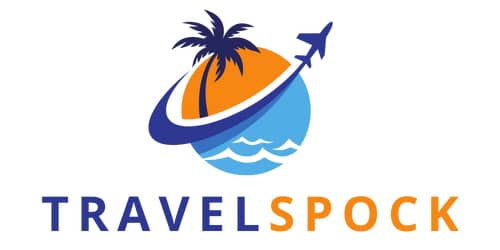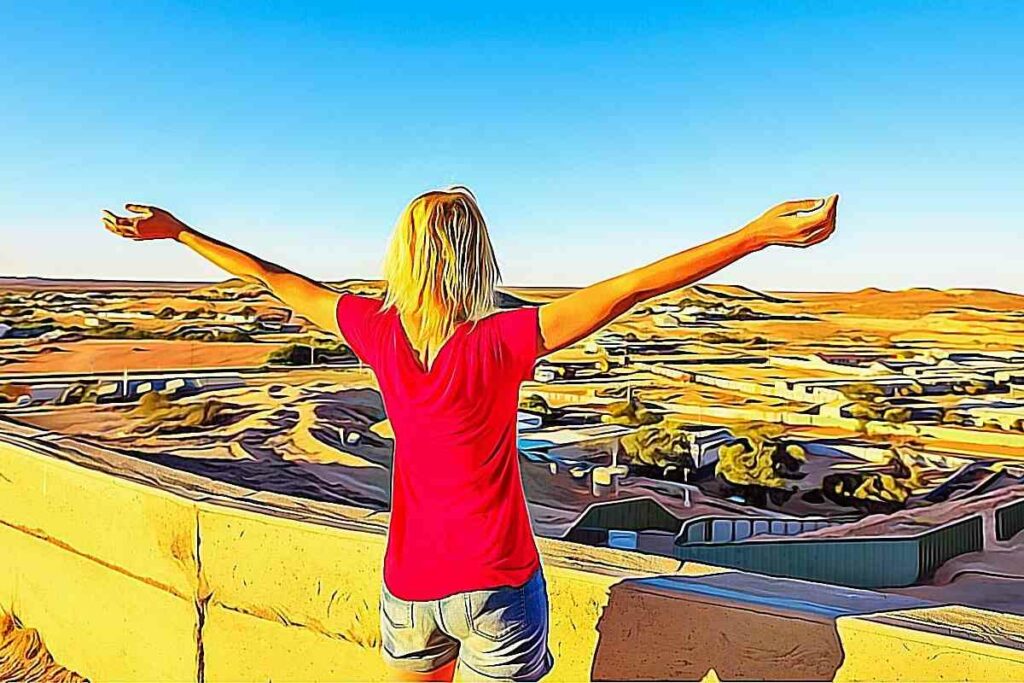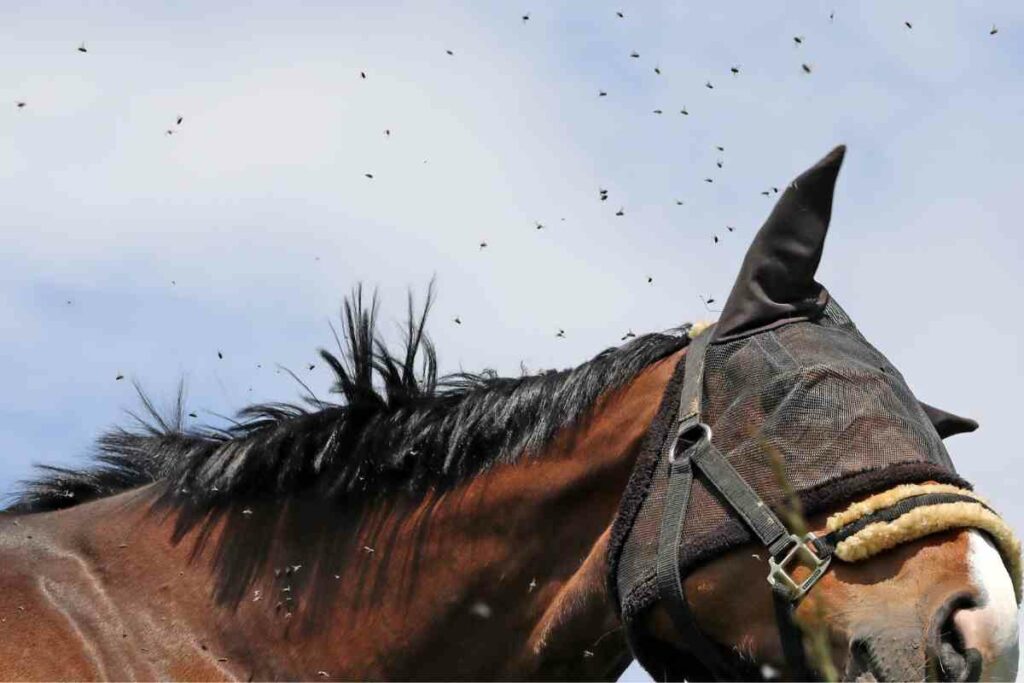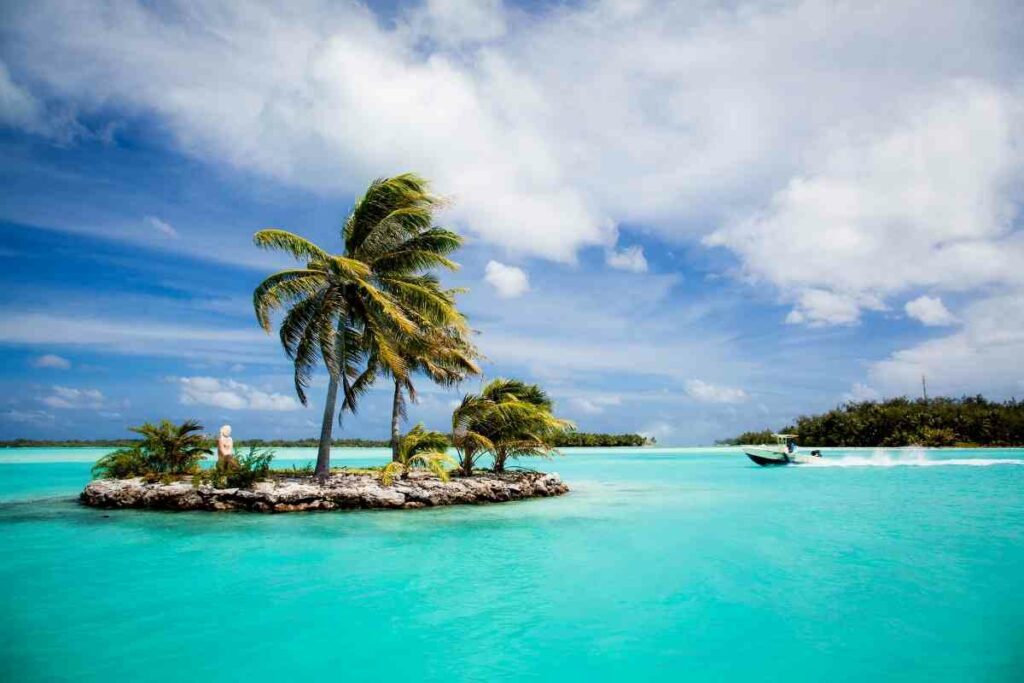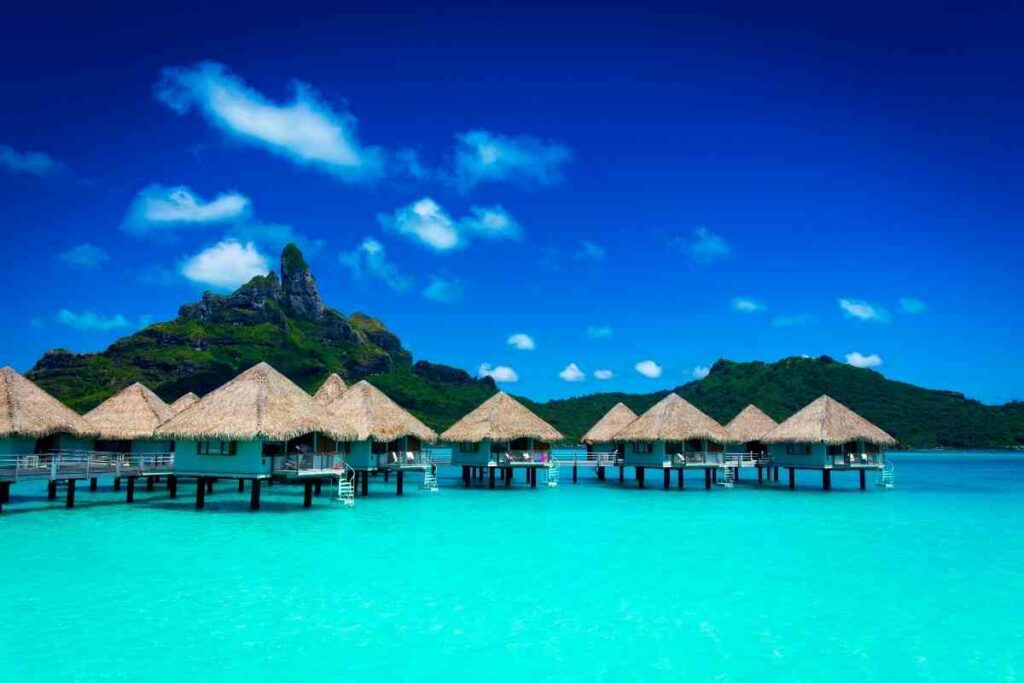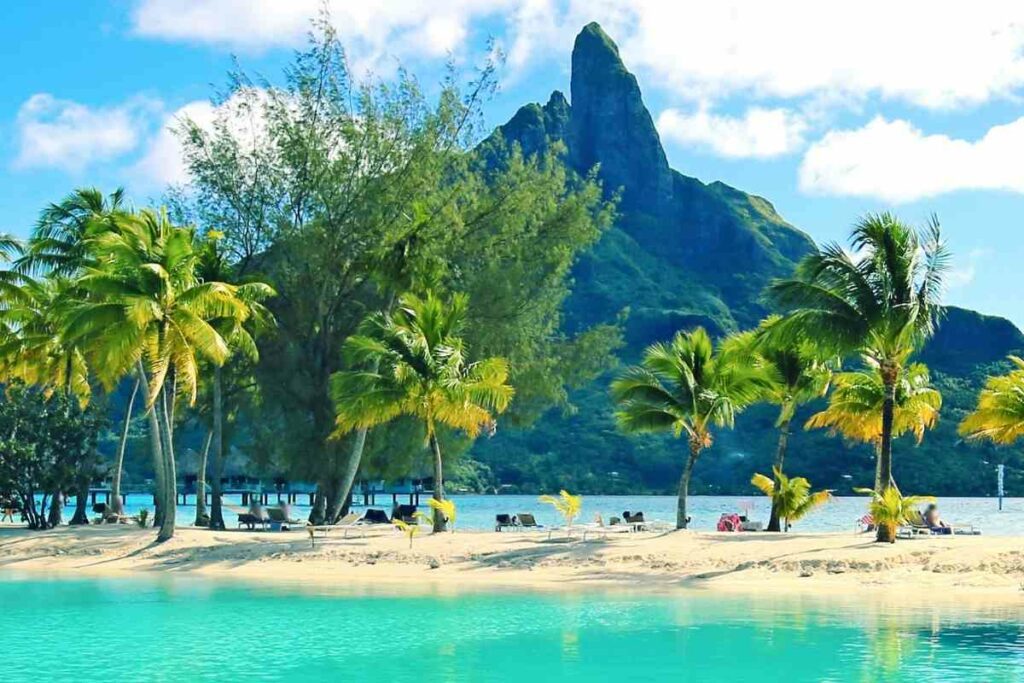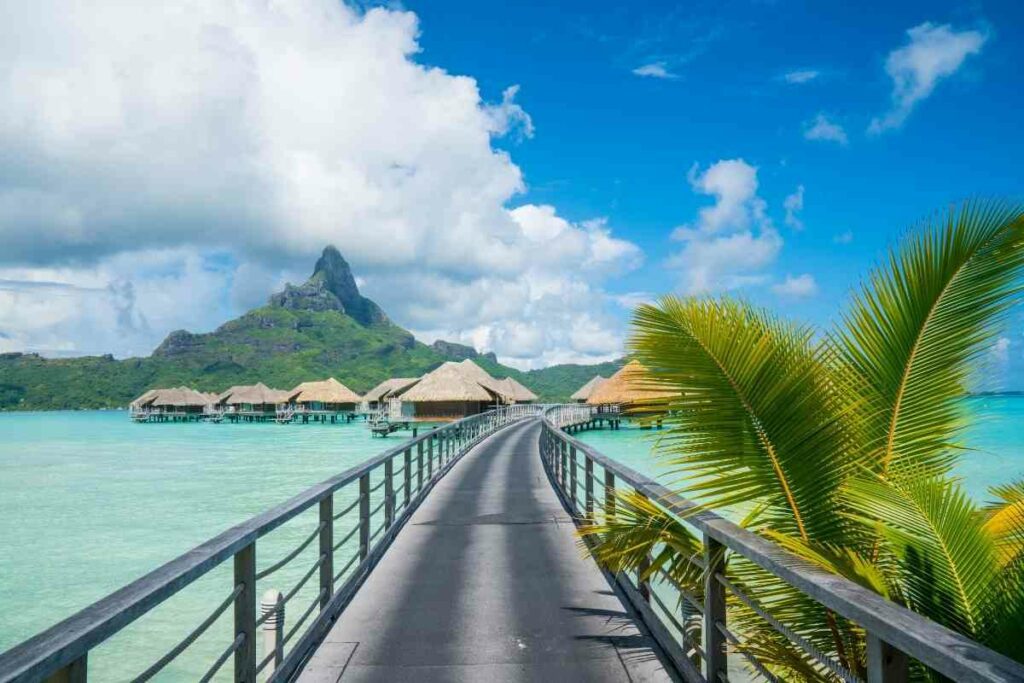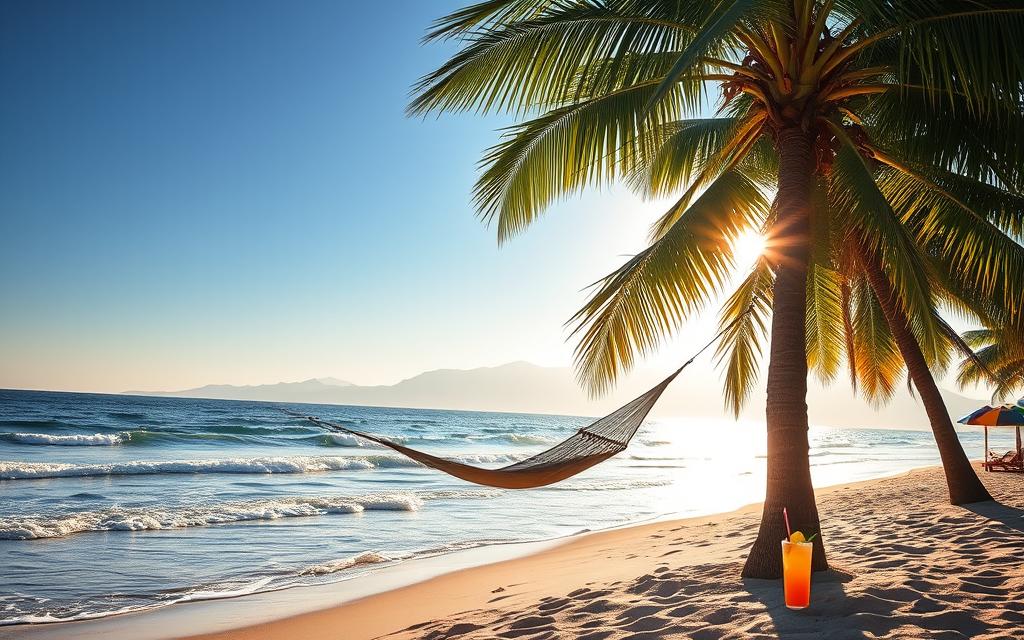The hit TV show Opal Hunter brought to life the trials and the triumph of prospectors from all walks of life.
If you’re a fan of the show or simply intrigued by the mining in one of the remotest places on earth, read on to discover Coober Pedy, where the TV show Opal Hunter was filmed.
Discover Coober Pedy
You probably can’t get more outback than the harsh, remote, wilderness of Coober Pedy.
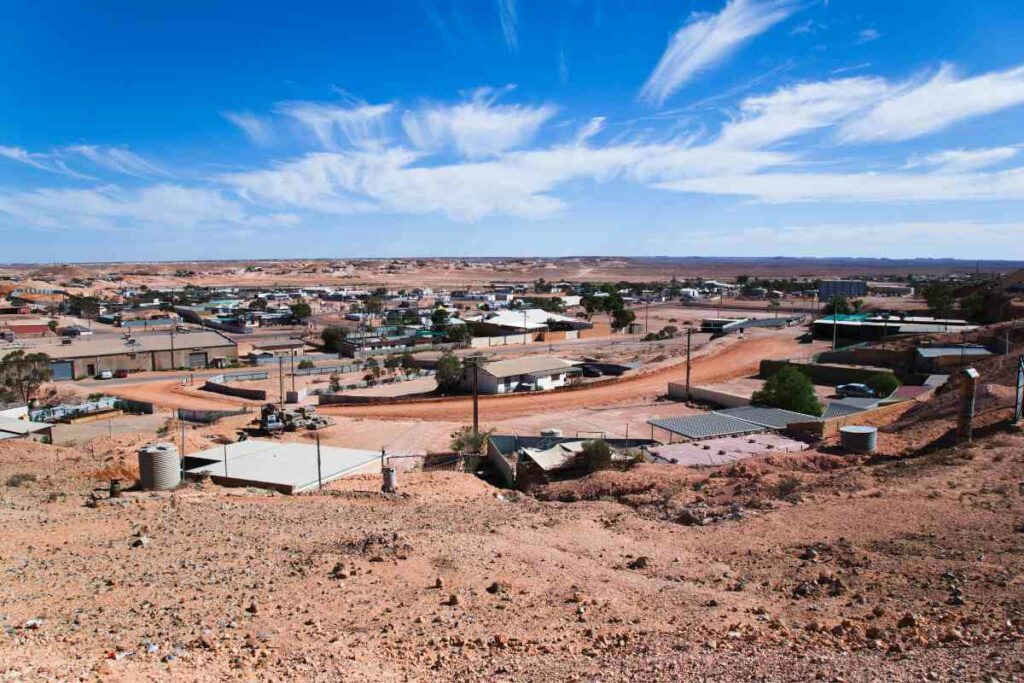
Beneath the harsh Aussie sun and dusty red soils are some of the world’s richest mineral reserves, which are known for yielding opals of remarkable quality and luster.
Blink and you’d easily think you’re on Mars and if you can endure the summer heat with peak temperatures of over 113 degrees Fahrenheit (45 degrees Celsius), you’ll find that this Australian outpost is the Wild West of Oz.
Looking for a town?
Think Down Under (more on that later).
About Coober Pedy
Head about 850 kilometers (526 miles) out of Adelaide on the Stuart Highway, and you’ll reach the middle of nowhere, also known as Coober Pedy!
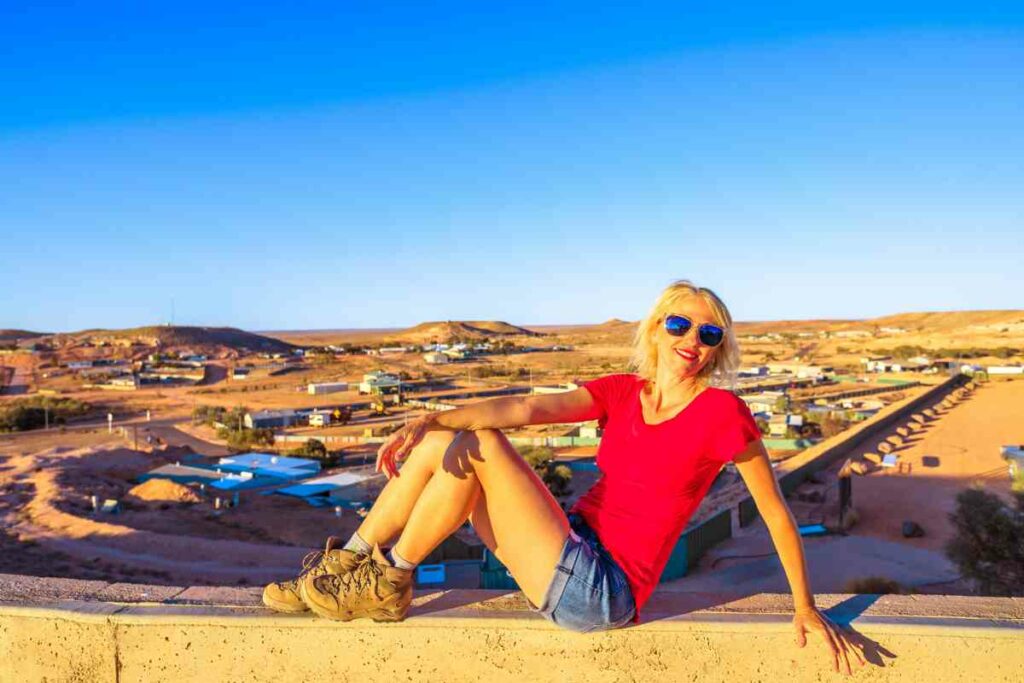
This small town in the north of southern Australia is home to a population of just under 2,000 residents.
Its name comes from the Aboriginal, Kupa-piti, which folks believe means ‘whitefellas’ hole’, ‘water hole’, or ‘quarry’. It also has an alternate name of Umoona, meaning ‘long life’.
Though it’s in the outback, as you’ll see, Coober Pedy has several claims to fame, not least the unusual underground dwellings, known as dugouts, that allow residents to escape the blistering heat.
Homes are excavated out of the hillside rock for the same cost as a house build, saving on the massive air conditioning costs of an above-ground home.
Over three-quarters of the local population are living this way.
Coober’s situation on beds of sandstone and siltstone in an arid tree-less desert makes living in Coober Pedy a daily challenge.

With little rain or water available and an absence of topsoil, costs are extremely high.
The water supply for the town is drawn from a borehole that taps the Great Artesian Basin. Residents pay the highest water charges in southern Australia.
The History of Coober Pedy
Coober Pedy is part of the traditional lands of the Western Desert peoples.
The Arabana people are thought to have been the original inhabitants, though the Kokatha and Yankunytjatjara people claim ceremonial sites in the area, with the name of the town derived from the Kokatha language.
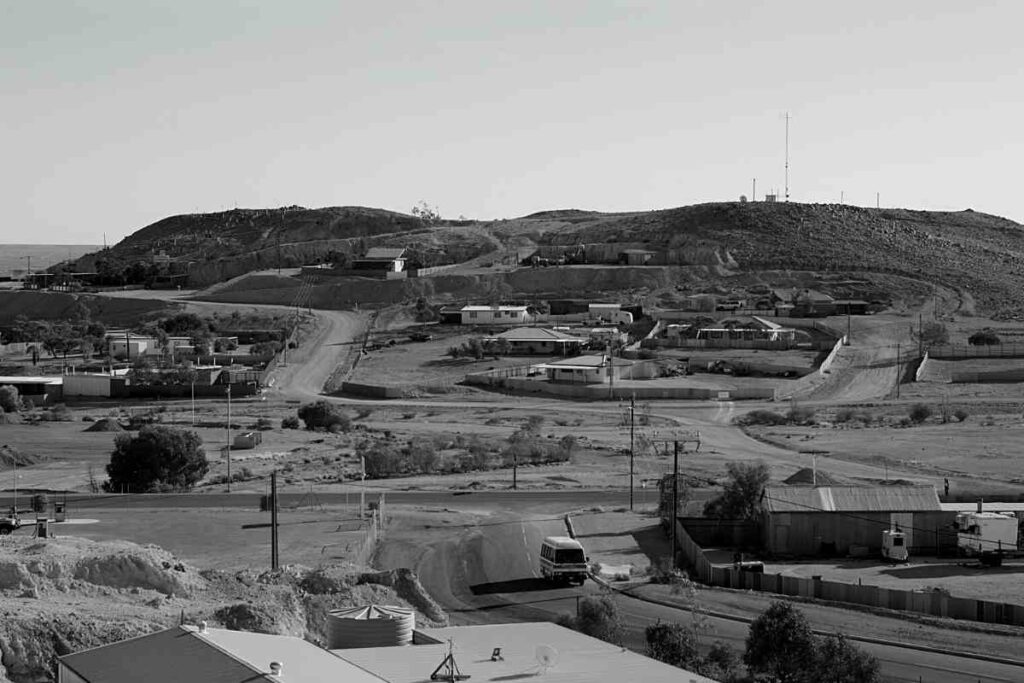
Europeans first encountered the region in the mid-19th century, John McDouall Stuart, a Scottish-born explorer, who gives his name to the highway that reaches the town, passed close in 1858, but the first commercial interest came from gold prospectors who were keen to access virgin ground.
The isolation and harsh, arid conditions meant that few prospectors made the journey, but seasons of rainfall meant that more people made the journey.
The first opals were discovered by gold prospectors in 1915 after an unsuccessful 14-week hunt for gold.
This began the rise in fortunes of what becomes the Stuart Range Opal Field.
Opal finds were the impetus for o the founding of the town with a store, post office, and underground water tank. Coober Pedy was formally named in 1920.
During subsequent years, the numbers of miners in the area continually fluctuated, in line with market prices and demand for opal. The Great Depression and WWII left the town nearly abandoned, with production at a standstill.
However, Tottie Kendall, an Aboriginal miner has a major opal find in 1945 that revived interest in prospecting in the area.
The town experienced its most rapid growth and population increase in the 1960s, with many European migrants becoming prospectors.
Mining in Coober Pedy also became industrialized, enabling the town to develop its amenities further.
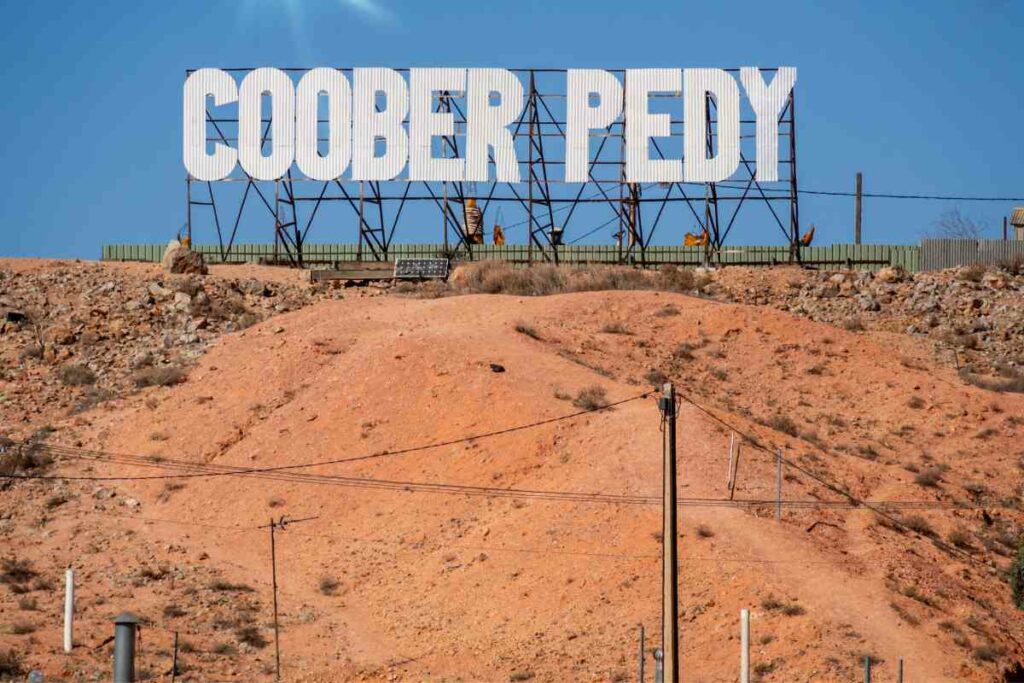
By the 1980s Coober Pedy transitioned from a self-governed outback mining town to having a formalized local authority with its first council elections held in 1987.
Many locals were not pleased with the change, but the local government provided residents with a greater range of services and amenities.
Mining in Coober Pedy
Beneath Coober Pedy is the mineral-rich earth that has been the source of the town’s wealth and fame.
Geologists believe that hundreds of millions of years ago, the region was covered by ocean.
Over time, the mineral-rich seabed became the source of silica minerals that were transformed by heat and pressure into opals, the original rainbow gem.
Opals in Coober Pedy
The land in and around Coober Pedy yields exquisite opal and over the years it has become the world’s largest opal mining region.
Its 70 opal fields have been an epicenter of opal mining for over a century.
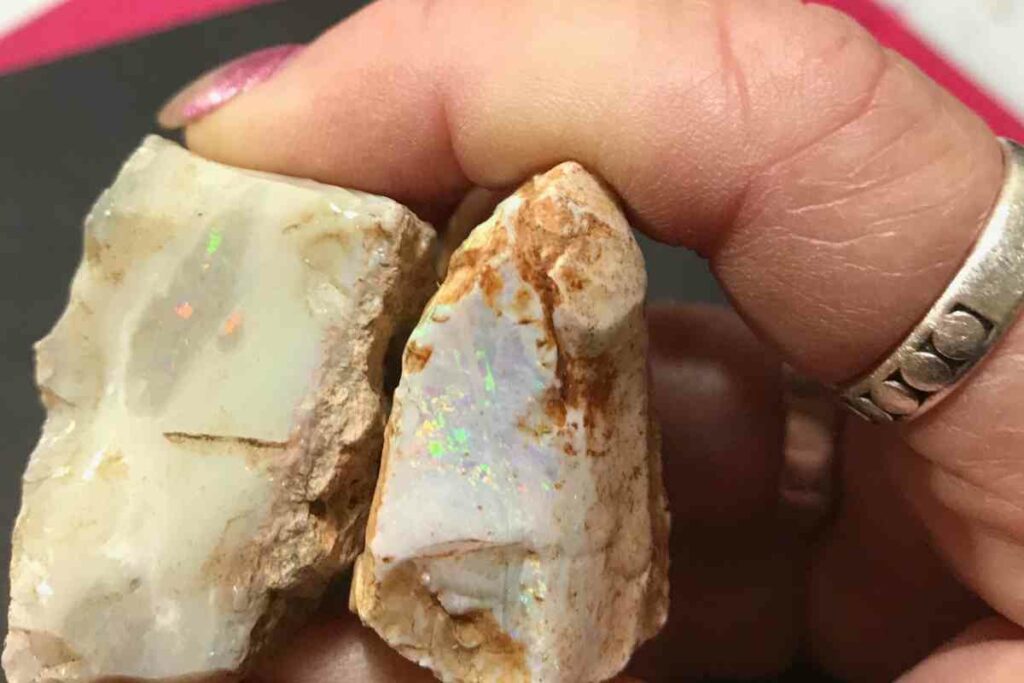
Since the first gem-quality opal was discovered in the early 20th century, over 250,000 mine shafts have been excavated. Opal prospectors are limited to a 165-square-foot (15.3 m2) claim.
Coober Pedy also attracts numerous recreational or semi-professional ‘noodlers’ or fossickers who are permitted to look for opals in a designated public area.
The authorities also invite tourists to have a go at noodling for their opal souvenir, provided they use no tools in their search.
Precious metal mining in Coober Pedy
Besides Opals, Coober Pedy also has significant iron ore, gold, and copper mining.
OZ Minerals own a $1.15 billion copper and gold mine, one of the largest in the region.
The large iron ore mine provides employment opportunities for Cooby Peder residents and brings commerce into the area.
Oil in Coober Pedy
Oil has also been discovered in Coober Pedy, with significant tight oil resources located in 2013.
The volume of oil may exceed 223 billion barrels of oil, enough to turn Australia into a net exporter of oil.
Mining activity in Coober Pedy is known for its ups and downs and the last decade has seen a drop in prospecting and mining activity.
Though this decline has been sustained, the level of development in this outback community has helped it develop into a tourist destination for the Outback experience.
Since 2019 – Tourism has been more important for the town’s economic development than its mining.
Rare and unique fossils in Coober Pedy
Besides precious metals and gems, Coober Pedy is also known for its exceptional fossil finds.
Not only are there remarkable specimens of sea shells, bones, and belemnite pipes, many of which become beautifully opalized.
Outback Opal Hunter, Coober Pedy’s claim to fame!
Coober Pedy was featured in the ratings-hit Opal Hunter.
This popular reality show, now in its eighth season follows Australian opal prospectors and miners, who brave the harsh desert to score it big by finding some of the world’s rarest gemstones.
Cooper Pedy has been part of the program from the start with big personalities like The Rookies, The Bishop, and The Blacklighters toughing it out to make their set season target.
Grab your hat and boots and take a trip to Coober Pedy!
If Outback Opal Hunter has piqued your interest in Coober Pedy, why not take a trip and see it for yourself?
Coober Pedy is one of the best destinations for an Outback experience and you’ll love the rugged but warm welcome and relaxed pace of this mining town.
Great reasons to check out Coober Pedy
Coober Pedy is packed with interesting and unique attractions that make a holiday to remember.
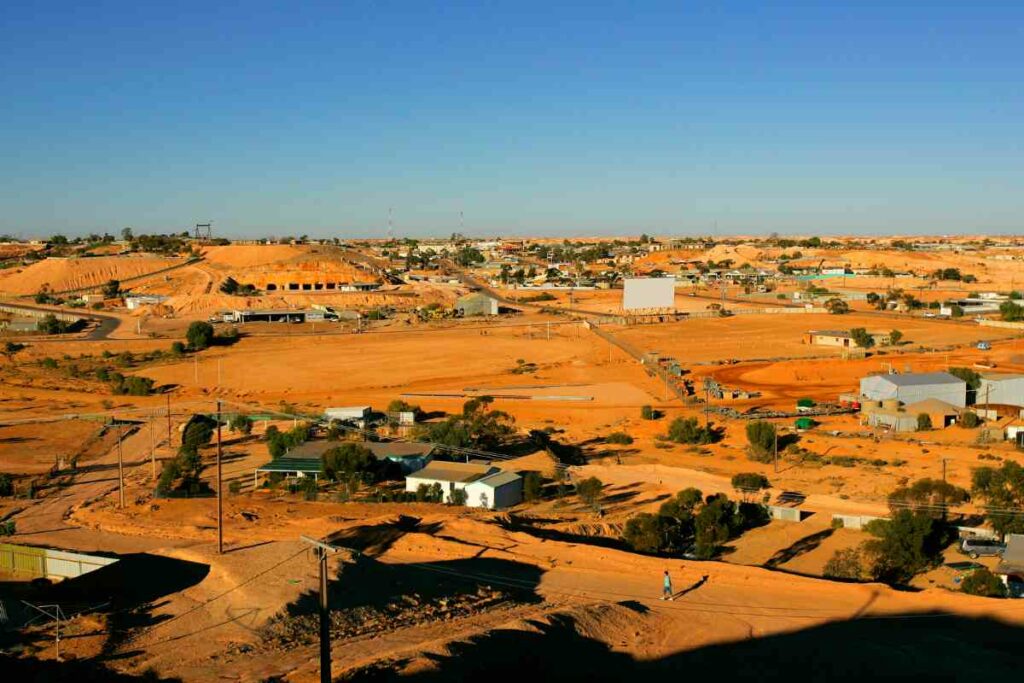
If you’re with a family, it provides a safe way to enjoy the Outback lifestyle and learn more about the mining heritage in Oz.
Here are some of the must-see spots in Coober Pedy and the surrounding area.
Big Winch Lookout
This is Coober Pedy’s most famous landmark and offers amazing views across the town.
The best time to look out from the winch is at sunrise or sunset.
The Big Winch was built in the 1970s by German immigrant Klaus Wirries as a celebration of the Opal Capital of the World.
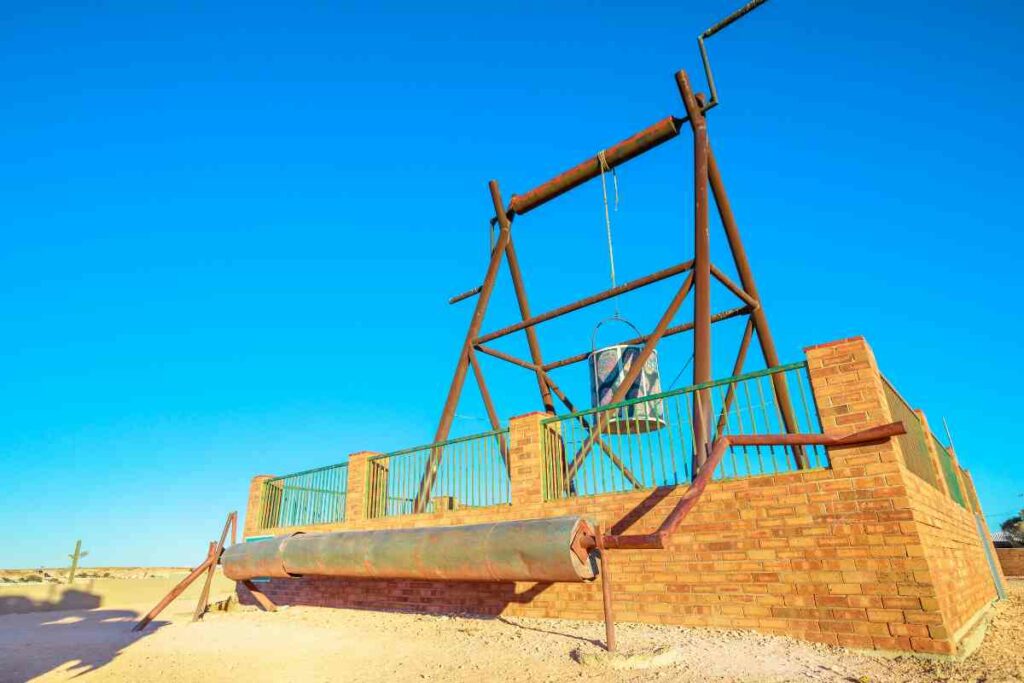
Coober Pedy Klaus, as he came to be known, was a big personality in the town as he mined, cut opals, and traded in them.
A tornado destroyed the winch in the 1980s, but locals rebuilt it and it has held steady ever since,
Coober Pedy Centenary Mosaic Garden
To celebrate the town’s centenary, Coober Pedy locals created an exquisite mosaic display, comprising over 100 individually made pavers.
Take a walk through this tranquil open space where you can learn about the lives of notable residents past and present and members of the Coober Pedy Mosaic Group.
You’ll find the Centenary Garden in front of Lion’s rotunda on Hutchinson Street, Sports Ground.
The Steel Tree
Bob Amarosi created this iconic steel tree by welding metal that had been recovered from a freight truck fire.
Bob built the Steel Tree to give local children the experience of climbing a tree as there were none in the town.
It was first installed on his business premises and later moved to the Big Winch, where you can find and attempt to climb it.
The Coober Pedy Historical Society
Coober Pedy has a historical society since 1989 when locals came together to preserve the town’s history for visitors and the coming generations.
Over the years, the society has accrued a fascinating collection of memorabilia that spans the formation of the town in the early 20th century, to contemporary events.
The National Library of Australia recognizes the town’s collection of over 4,000 photos and documents as being of national significance.
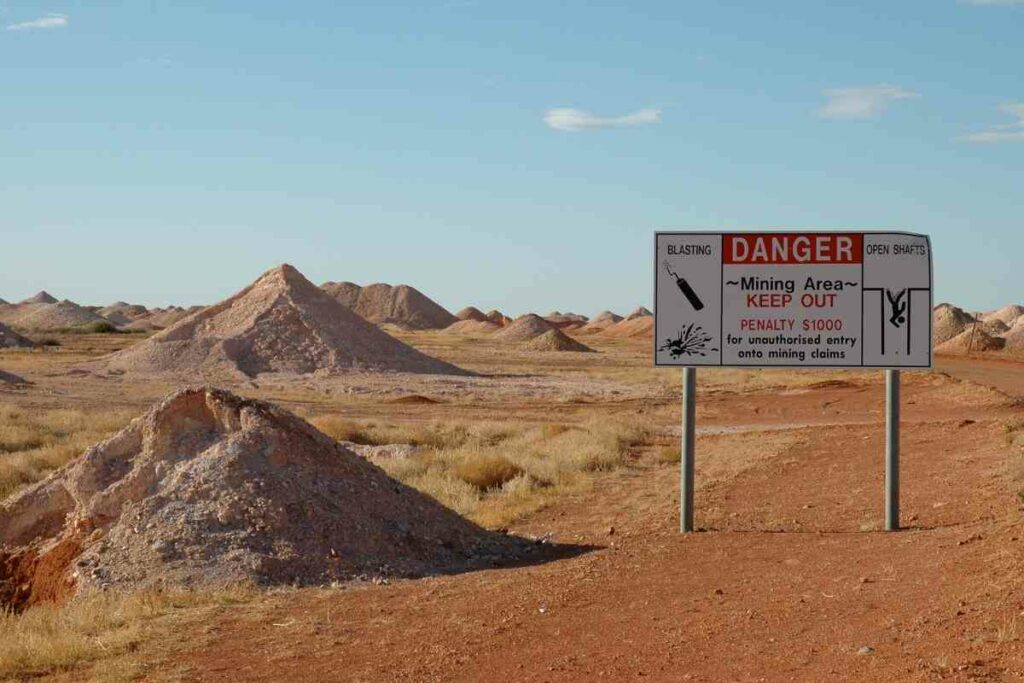
If you want to learn more about Coober Pedy’s mining history, the historical society offers a selection of guides and excursions, which are led by volunteer members of the society.
Coober Pedy Amateur Race Club
A desert mining outpost is probably the last place on Earth you’d expect to find a racecourse, but Coober Pedy has to be different!
The Coober Pedy Racing Club has been around since 1969. It was set up to build relationships between prospectors, miners, and the town’s locals.
The land for the racecourse was donated by Charley Kunoth for a peppercorn rent of 1 cent per year.
Despite the heat, dust, and almost complete absence of grass, race meets have been taking place annually for almost 40 years!
Coober Pedy Drive-In
Why not enjoy a movie ‘Flintstone’s’-style at one of the last remaining Drive-In cinemas in Australia?
Watching a film under the stars alongside Coober Pedy residents is a unique experience and the upgraded digital projector means that the viewing quality is amazing.
Volunteers run the cinema, with a screening every Saturday night (and some Fridays) between late spring and mid-December.
Check out their website for film times and turn up on the day in your vehicle with cash in hand.
Coober Pedy’s underground churches
The subterranean lifestyle of Coober Pedy even extends to its churches, with congregations from a range of denominations gathering in caves or mines for their fellowship.
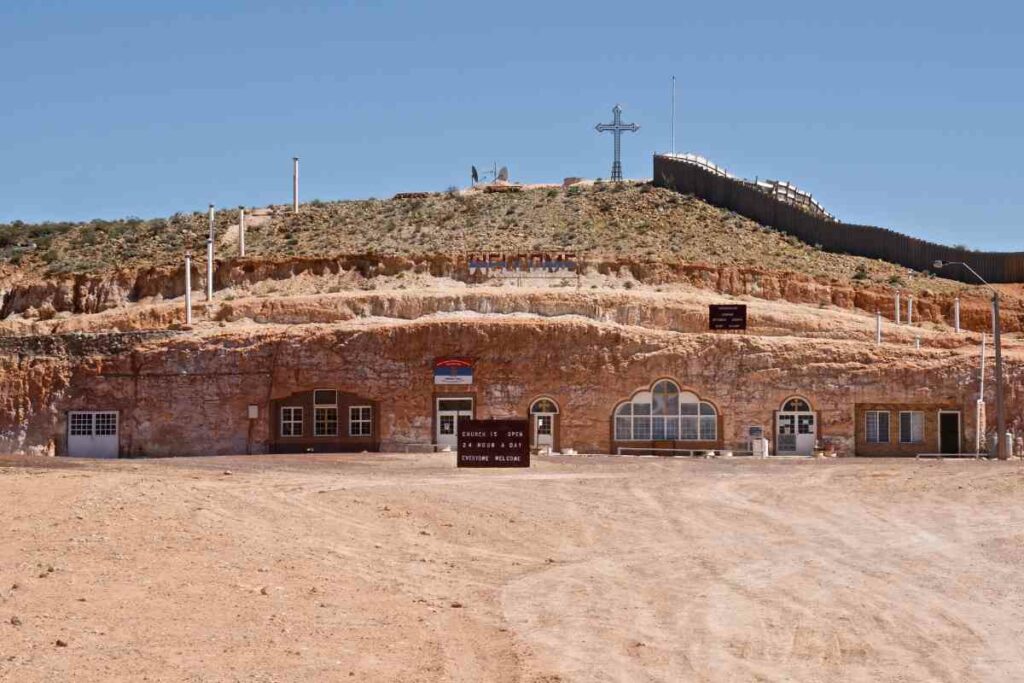
Despite the low resident population, you’ll find Serbian Orthodox, Anglican, Catholic, and Evangelical services taking place throughout the year.
Coober Pedy Opal Fields Golf Club
This is a golf club where you need to take the management seriously when they say “keep off the grass”.
The Coober Pedy Opal Fields Golf Club is one of the world’s most unusual golf courses, with black greens, white fairways, and opals scattered here and there.
Despite the strangeness of this golf course, this isn’t pitch ‘n’ put, The Coober Pedy Opal Fields Golf Club is 18-hole, 72-par, and holds its own by using artificial grass mats for teeing off and specially oiled and smoothed sand for putting.
Coober Pedy’s Well-being Labyrinth
The well-being labyrinth is an ideal place to unwind in the late afternoon when the day starts to cool off.
This-stone lined labyrinth is 25 meters in diameter and has a 7-circuit seed pattern.
It was built by the local community in 2021 and is free to the public. The labyrinth is in a quiet part of the town, near the wetland and recreational reserve. You can get to the labyrinth via the
Triangle Recreational Reserve on Hutchinson Street.
The Coober Pedy Opal Fields
Outback Opal Hunter has attracted thousands of tourists who want to see what the rugged mining lifestyle is really like.
You can head out to the Coober Pedy Opal Fields.
The land is pockmarked with over 1.5 million open shafts, making it look like an extraterrestrial landscape.
If you want to visit the opal fields, there are some essential ground rules:
- Do not head onto pegged claims, unless a miner has permitted you.
- Do not head out to the opal fields at night.
- Do not go near machinery
- Be careful where you walk as there are open mineshafts.
Accommodation in Coober Pedy
If you’re sold on a trip to Coober Pedy, you’ll be relieved to know that the accommodation is not as rough and ready as the surroundings!
As Coober Pedy has evolved as an Outback tourism hotspot, the options for comfortable accommodation at every price point have expanded.
Here are some great local options.
Hotels in Coober Pedy
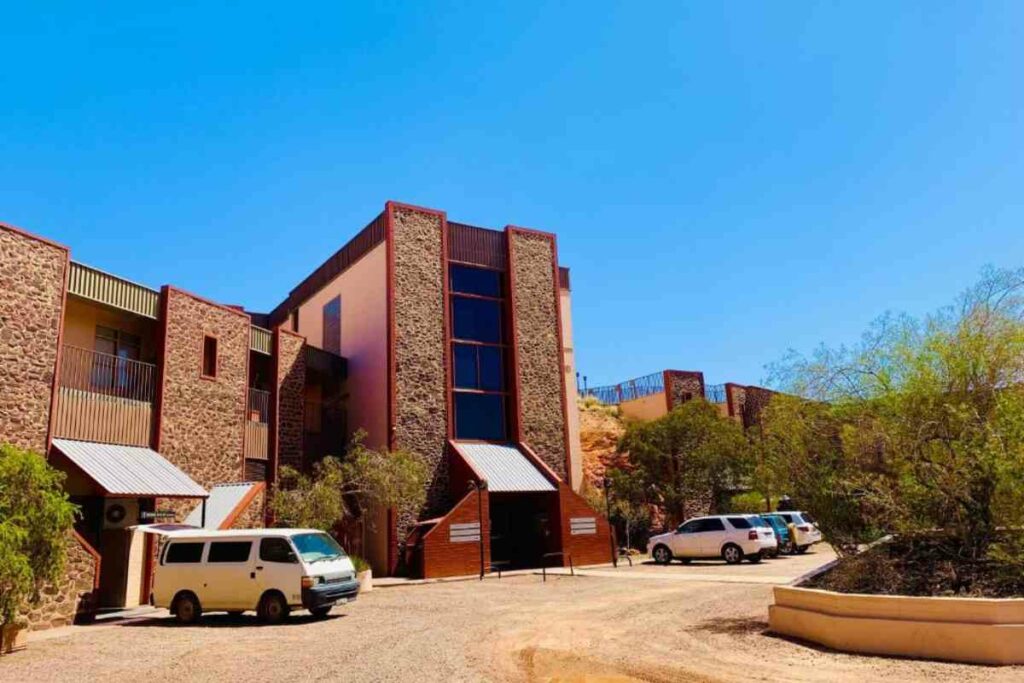
The Desert Cave Hotel
- Phone: +61 8 8672 5688
- Address: 1 Hutchison St, Coober Pedy SA 5723
Coober Pedy’s leading hotel is the Desert Cave Hotel which is a landmark on Hutchinson Street, the main thoroughfare of the town.
It offers luxury hotel accommodation in a unique dug-out style setting.
In addition to its well-furnished underground and above-ground rooms, this International Hotel offers conference facilities, and a cafe, restaurant, and bar.
If you’re in town on business, the hotel has its interpretive center where you can have opals evaluated.
Big4 Stuart Range Resort
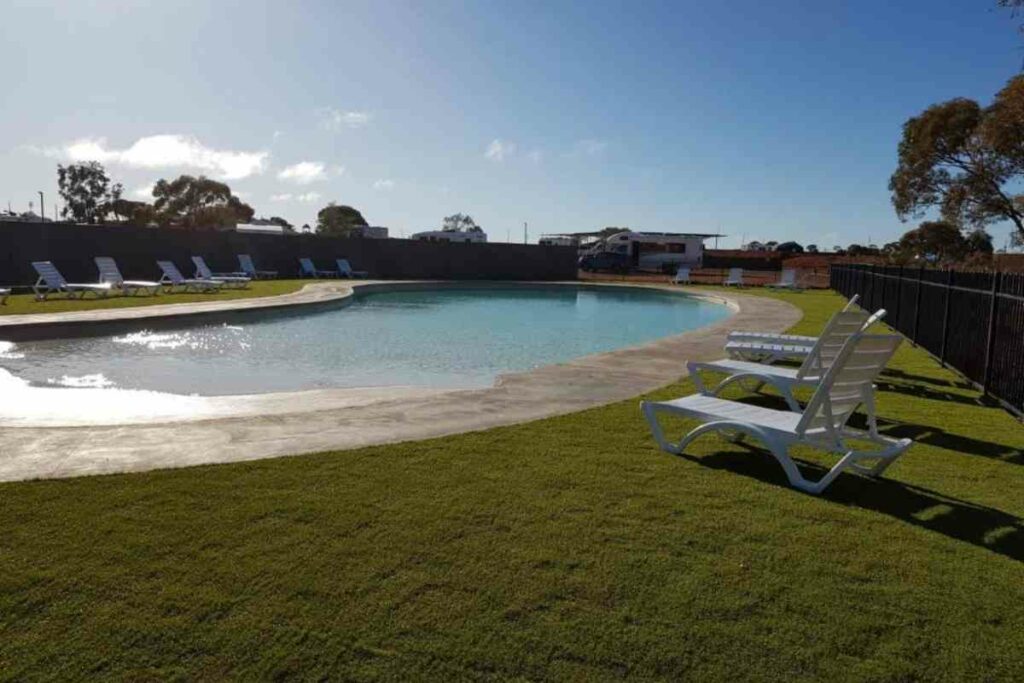
- Address: Hutchison St, Coober Pedy SA 5723
- Phone: +61 8 8672 5179
For a luxury resort experience, you can visit the BIG4 Stuart Range Outback Resort, which offers several accommodation options, including hotel rooms, luxury self-catering apartments, and touring sites for motorhomes.
This resort offers a swimming pool, children’s play area, and one of the best pizzerias in town, Pizza Nostimo.
You can also visit the on-site art gallery and gift shop to purchase fabulous souvenirs.
Coober Pedy Motels
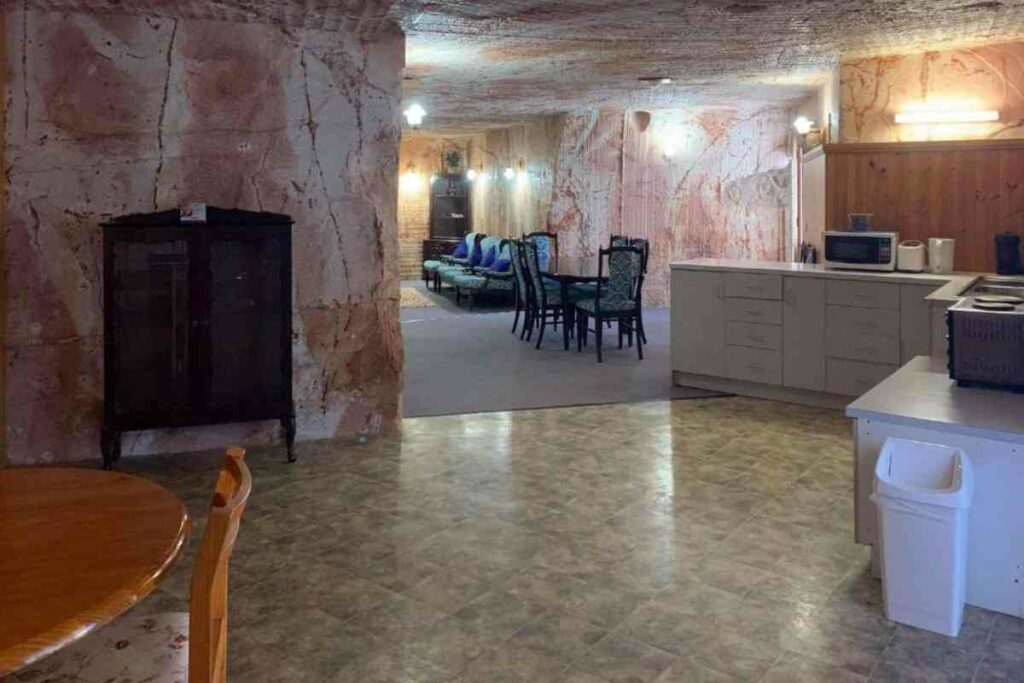
Comfort Inn Coober Pedy Experience Motel
- Address: Crowders Gully Rd, Coober Pedy SA 5723
- Phone: +61 8 8672 5777
The Comfort Inn Coober Pedy Experience Motel is located within a mine that has been disused since the 1960s.
This expansive motel complex is extremely comfortable and well decorated with singles, twins, triples, and family rooms to choose from.
All rooms have an ensuite bathroom, complementary tea, and coffee, and there is free Wi-Fi throughout the motel.
Mud Hut Motel
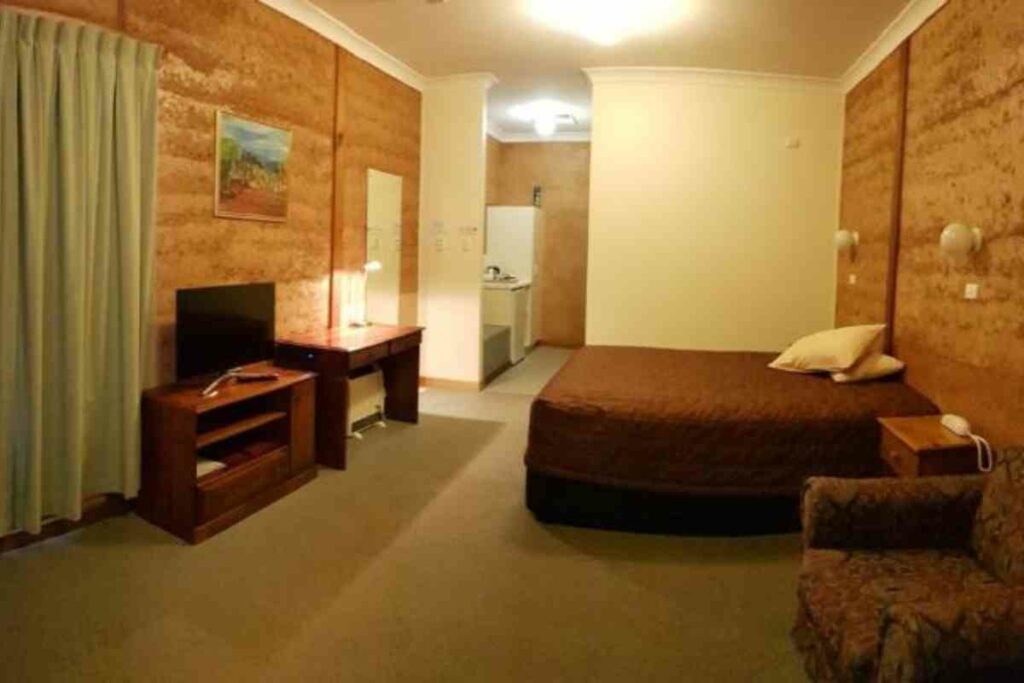
- Address: LOT 102 St Nicholas St, Coober Pedy SA 5723
- Phone: +61 8 8672 3003
The Mud Hut Hotel offers motel rooms and two bedroom self-catering apartments that are suitable for business and tourist travel.
The motel even offer free airport transfers and competitive longer-term rates if you want to extend your stay, and there is an on-site laundry which is ideal if you’re backpacking or prospecting! Pets are also welcome at this motel.
Radeka’s Downunder
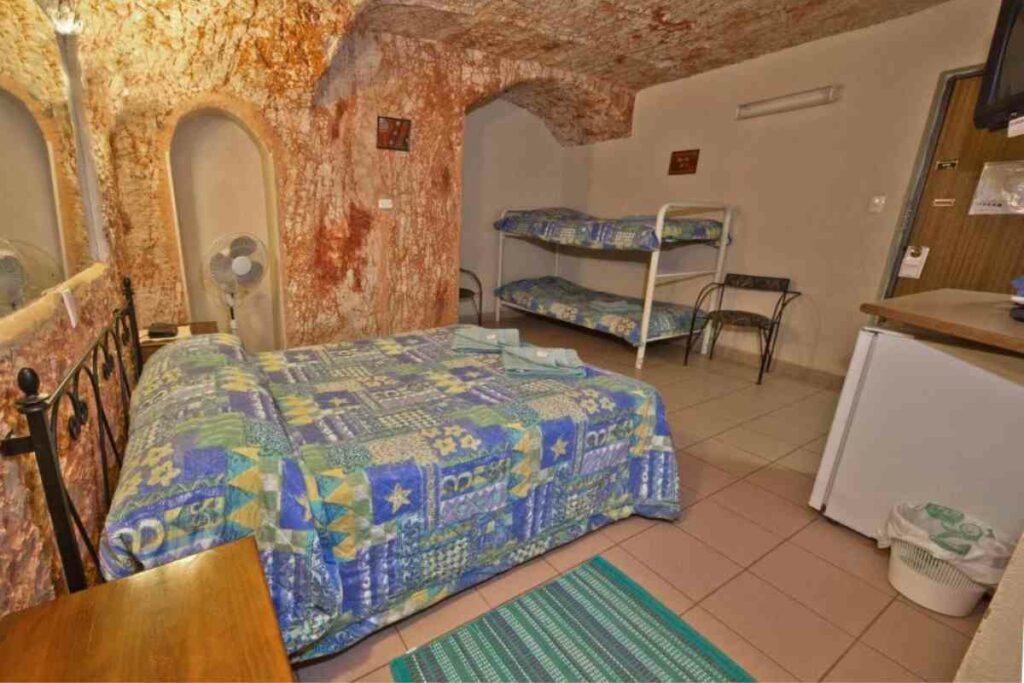
- Address: 1 Oliver St, Coober Pedy SA 5723
- Phone: +61 8 8672 5223
This centrally located underground motel is popular with backpackers as it offers competitive rates.
It offers rooms and dormitory-style accommodation up to 6.5 meters underground.
Bathrooms are shared and a communal kitchen is available for guests to use. The motel also has secure on-site parking and a coin-operated laundry.
Caravan Parks in Coober Pedy
Oasis Coober Pedy Tourist Park
- Address: Hutchison St, Coober Pedy SA 5723
- Phone: +61 8 8672 5169
If you’re bringing your motorhome or towing a caravan down to Coober Pedy, this safe and comfortable tourist park will provide you with a range of powered and unpowered pitches.
Amenities offered include ensuite facilities, cabins, a games room and an indoor pool.
Opal Inn Hotel, Motel Caravan Park
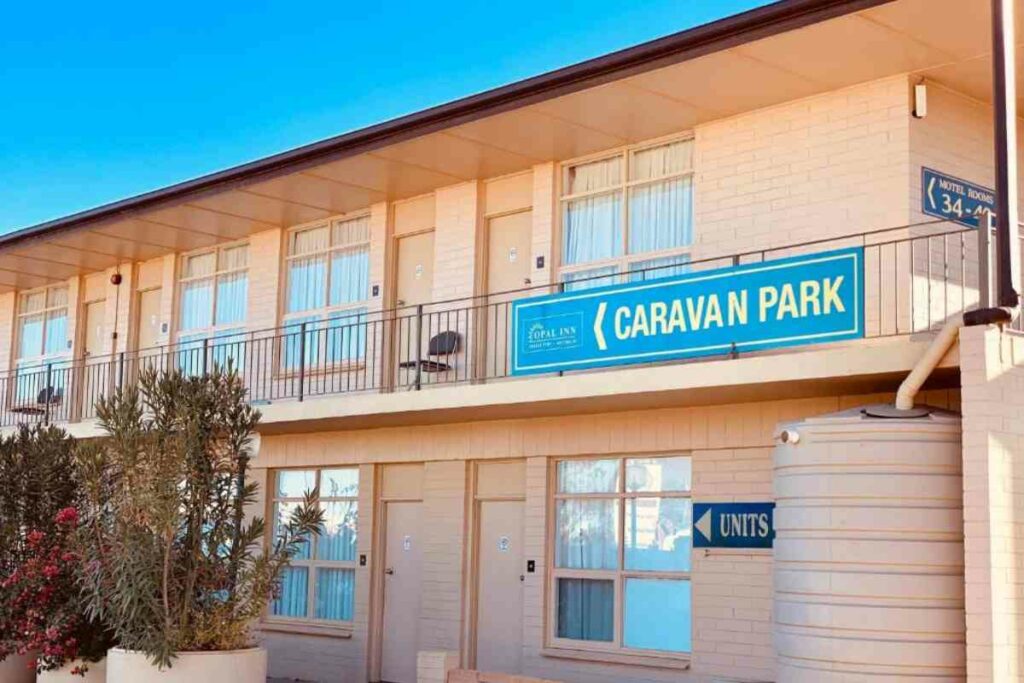
- Address: Hutchison St, Coober Pedy SA 5723
- Phone: +61 8 8672 5054
The Opal Inn Hotel, Motel and Caravan Park is a great central option for traveling into Coober with a motorhome.
An additional advantage is you can always book yourself in for a couple of nights if you’re tired of staying in the caravan.
The Opal Inn Motel Caravan Park also offers water refilling, laundry and on-site dining and entertainment.
Campsite in Coober Pedy
Riba’s Underground Camping
- Address: LOT 1811 William Creek Rd, Coober Pedy SA 5723
- Phone: +61 8 8672 5614
You’ve not been camping until you have camped underground!
Riba’s Underground Camping is a campsite that is located underground in a disused opal mine.
It is the only underground campsite in the world.
Your hosts, Jason and Ariane offer powered and unpowered pitches for campers along with dormitory accommodation, showers, a BBQ, and laundry.
Homestays and Airbnb in Coober Pedy
People who are looking for alternative accommodation also have the option of staying in one of the many homestays and Airbnb in the area.
Some of the unique accommodation in the town includes pet friendly apartments, dug-out B&Bs and room and board in some of the locals’ underground homes.
When is the best time to visit Coober Pedy?
If you’ve watched Outback Opal Hunters, you’ll know that Coober Pedy has a very defined season for mining and tourist activity.
When the Australian summer hits, Coober Pedy undergoes a hard shutdown with little in the way of attractions, entertainment or hospitality available.
Why?
The insane temperatures that are a threat to human life. With midday temperatures exceeding 113 degrees Fahrenheit (45 degrees Celsius), the summer weather is a tangible threat to human life, with zero shade provided by the arid landscape.
January and February are the worst times to visit Coober Pedy.
Instead, opt for the cool and comfortable winter months of May through September. With tolerable temperatures, you can really get out and about to explore this amazing place!
How can I get to Coober Pedy?
Coober Pedy is one of the most accessible Outback locations because of its proximity to the Stuart Highway.
This means that you’ll be able to drive there easily. Expect a half-day’s drive from Alice Springs or a full-day on the road if you’re heading in from Adelaide.
You can also get the train to Coober Pedy. The Ghan Rail service will stop in Coober Pedy up to four times per week.
An alternative transport option is the Greyhound-Pioneer bus service that also stops in the town.
Rounding up
Coober Pedy is definitely one of those ‘bucket-list’ destinations that will keep you in Instagram posts for years to come.
It is certainly one of the best destinations for the Outback experience, with fewer flies and a comfortable bed at the end of your day’s exploring.
And, of course, you can’t visit Opal City without doing a little prospecting of your own!
- Discover Coober Pedy – Where the TV Show Opal Hunter Was Filmed
- Why Are There So Many Flies in Outback Australia?
- 17 Interesting Bora Bora Facts & Information 2023
- What Time Is It in Bora Bora?
- Mount Otemanu, Bora Bora Ultimate Guide
- Maldives vs Bora Bora – The Best Guide for Couples and Newlyweds 2023 [Updated]
